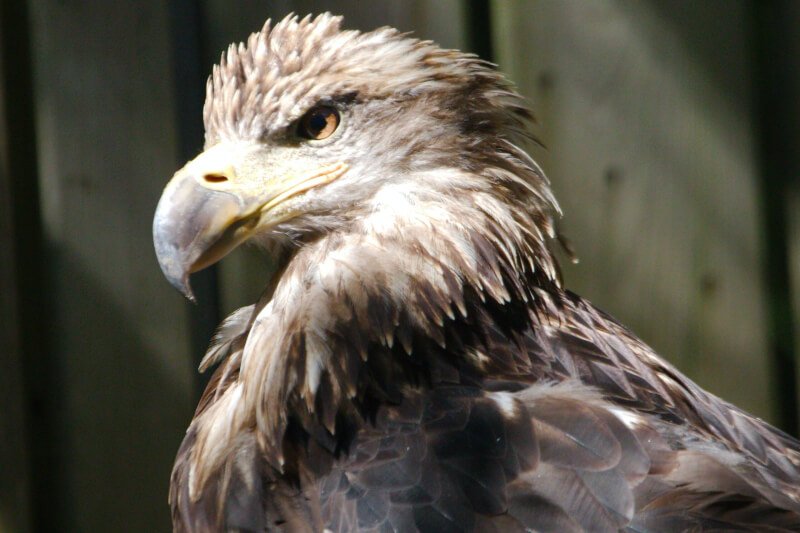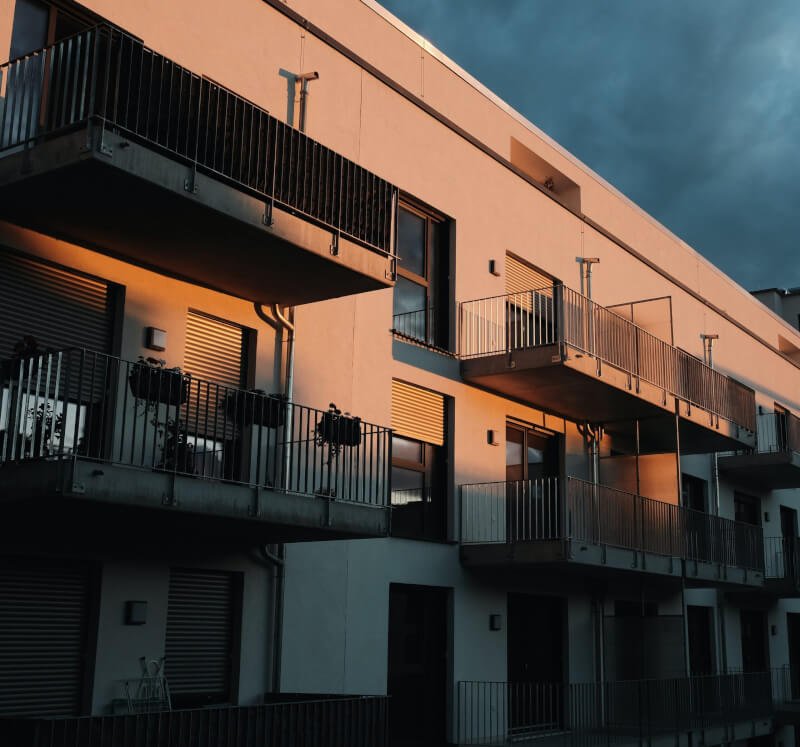When it comes to creating the perfect habitat for your reptile, there are many factors to consider. One question that often arises is whether or not wood is a suitable material for reptile enclosures. In this article, we will explore the pros and cons of using wood in reptile enclosures, giving you all the information you need to make an informed decision for your scaly friend. So, let’s dive in and find out if wood is okay for your reptile’s home.

Benefits of Using Wood for Reptile Enclosures
Natural Appearance
When it comes to creating a comfortable and visually appealing environment for your reptiles, using wood for their enclosures is an excellent choice. Unlike other materials, wood provides a natural and organic look that can mimic the reptile’s natural habitat. This not only enhances the aesthetic appeal of the enclosure but also helps to create a more comforting and familiar space for your reptile. Furthermore, the natural textures and colors of wood can add a touch of beauty and warmth to any living space.
Insulation Properties
Wood is known for its excellent insulation properties, making it an ideal material for reptile enclosures. Reptiles are ectothermic creatures, meaning they rely on external heat sources to regulate their body temperature. Wood naturally provides insulation, helping to maintain a stable and comfortable temperature within the enclosure. This insulation property can help to reduce temperature fluctuations, creating a more optimal and stress-free environment for your reptile.
Customizability
Another advantage of using wood for reptile enclosures is its high level of customizability. Wood is a versatile material that can be easily shaped, cut, and modified to meet your specific needs. Whether you want to add additional platforms, hiding spots, or climbing structures, wood can be easily manipulated to create a unique and enriching environment for your reptile. With the right tools and creativity, you can let your imagination run wild and design an enclosure that caters to your reptile’s needs and preferences.
Types of Wood Suitable for Reptile Enclosures
Plywood
Plywood is a popular choice for reptile enclosures due to its affordability and versatility. It is made by layering thin sheets of wood veneer together, creating a strong and durable material. Plywood is available in various thicknesses, allowing you to choose the appropriate thickness for your reptile’s enclosure. It can be easily cut and assembled to create a sturdy and reliable structure. However, keep in mind that plywood should be properly sealed and waterproofed to prevent moisture damage.
Melamine
Melamine is another widely used material for reptile enclosures due to its resistance to moisture and ease of maintenance. Melamine is a type of particle board coated with a melamine resin, making it highly durable and easy to clean. It is available in a variety of colors and finishes, allowing you to customize the appearance of the enclosure. Melamine is also known for its excellent thermal insulation properties, helping to regulate the temperature within the enclosure effectively.
Cedar
Cedar is a natural wood that offers several benefits for reptile enclosures. It is naturally resistant to pests, such as mites and termites, making it an excellent option for long-term use. Cedar also has a pleasant aroma that can help to mask odors within the enclosure. However, it is important to note that cedar can be toxic to some reptiles, so it is essential to research and ensure that your specific reptile species can safely be housed in a cedar enclosure.
Considerations Before Choosing Wood for Reptile Enclosures
Toxicity
One of the most important factors to consider when using wood for reptile enclosures is the potential toxicity of the wood. Some types of wood, such as pine and cedar, can release toxic substances that can be harmful to reptiles. It is crucial to research and select non-toxic wood options that are safe for your specific reptile species. Additionally, it is recommended to avoid using wood that has been treated with chemicals or paint, as these can also pose a potential health risk to your reptile.
Durability
Durability is another crucial consideration when choosing wood for reptile enclosures. Reptiles can be active and destructive, so it is important to select a wood that can withstand their behavior. Plywood and melamine are generally considered to be more durable options, as they are resistant to moisture and can hold up well against scratching and biting. However, it is important to regularly inspect the enclosure for any signs of wear or damage and repair or replace any compromised areas promptly.
Maintenance
Maintenance requirements should also be taken into account when selecting wood for reptile enclosures. Different types of wood may require different levels of maintenance to keep them in optimal condition. Sealing and waterproofing the wood surfaces is essential to protect them from moisture damage and to prevent the growth of mold and mildew. Regular cleaning and disinfection of the enclosure will help to maintain a hygienic environment for your reptile. It is important to choose a wood option that aligns with your ability and willingness to properly maintain the enclosure.
Understanding the Toxicity Risks
Common Toxic Substances
Wooden enclosures can potentially release toxic substances that can be harmful to reptiles. Pine and cedar, in particular, contain aromatic compounds called phenols that can have adverse effects on reptiles. These phenols can cause respiratory and liver problems, irritate the eyes and skin, and even lead to death in extreme cases. It is crucial to choose non-toxic wood options that do not contain harmful substances that could endanger the health and well-being of your reptile.
Proper Sealant Application
To minimize the toxicity risks associated with wood enclosures, it is essential to properly seal the wood surfaces. Sealants create a barrier between the wood and the reptile, preventing the release of toxic substances. Look for sealants that are specifically designed for use with reptile enclosures, as they are formulated to be non-toxic and safe for reptiles. Apply the sealant according to the manufacturer’s instructions, ensuring that all surfaces are adequately covered and protected.
Avoiding Harmful Wood
In addition to properly sealing the wood, it is important to avoid using certain types of wood that are known to be harmful to reptiles. Pine and cedar, as mentioned earlier, should be avoided due to their potential toxicity. Instead, opt for non-toxic wood options such as birch, oak, or aspen. These woods are generally considered safe for reptiles and do not release harmful substances. Always research and verify the safety of the wood you plan to use before constructing the enclosure.

Examining the Durability Factor
Resistance to Moisture
Moisture resistance is a crucial factor to consider when evaluating the durability of wood for reptile enclosures. Reptile habitats often have high humidity levels, and exposure to moisture can lead to warping, rotting, and the growth of mold and mildew. Plywood and melamine are both known for their excellent moisture resistance and can withstand the challenges posed by high humidity environments. Regular maintenance, including proper sealing, can also help to enhance the wood’s resistance to moisture.
Ability to Withstand Biting
Reptiles can exhibit strong biting behaviors, especially when they feel threatened or agitated. It is important to choose a wood that can withstand these biting forces without being easily damaged. Plywood and melamine are generally more robust and can hold up well against biting. However, it is crucial to monitor your reptile’s behavior and provide appropriate chewing materials to redirect their biting instincts and prevent damage to the enclosure.
Longevity
The longevity of a wood enclosure is a key consideration to ensure the safety and comfort of your reptile in the long run. Durable wood options such as plywood and melamine can provide a solid and reliable structure that can withstand the test of time. Additionally, regular maintenance and inspections will help to identify any signs of wear or damage that may compromise the durability of the enclosure. Prompt repairs or replacements should be carried out to maintain the integrity of the enclosure and ensure the well-being of your reptile.
Maintenance Requirements of Wood Enclosures
Sealing and Waterproofing
To maintain the durability and longevity of a wood enclosure, proper sealing and waterproofing are essential. Sealing the wood surfaces using a non-toxic sealant creates a protective barrier that prevents moisture from penetrating the wood and causing damage. It is recommended to apply multiple coats of sealant, ensuring complete coverage. Additionally, regular inspections should be performed to identify any areas that may require resealing or touching up.
Cleaning and Disinfection
Regular cleaning and disinfection of the enclosure are essential for maintaining a hygienic environment for your reptile. Use a reptile-safe disinfectant to thoroughly clean all surfaces of the enclosure, including the wood. It is important to follow the manufacturer’s instructions for the disinfectant and ensure that it is safe for use with the wood type you have chosen. Regular spot cleaning should also be carried out to remove any waste or soiling that may accumulate in the enclosure.
Preventing Mold and Mildew
Wood enclosures are prone to the growth of mold and mildew, especially in environments with high humidity levels. Regular monitoring and preventive measures can help to minimize the risk of mold and mildew. Ensure that the enclosure is well-ventilated to promote air circulation and prevent moisture buildup. Promptly address any signs of mold or mildew by removing affected materials and disinfecting the enclosure. Proper sealing and waterproofing, as mentioned earlier, can also help to prevent moisture and inhibit the growth of mold and mildew.

Alternatives to Wood for Reptile Enclosures
Plastic and Acrylic
Plastic and acrylic are popular alternatives to wood for reptile enclosures due to their durability and ease of maintenance. These materials are resistant to moisture, easy to clean, and offer a clear view into the enclosure. Plastic and acrylic enclosures are available in a variety of sizes and shapes, allowing for customization and flexibility. However, it is important to note that these materials may not provide the same level of insulation as wood and may require additional heating sources to maintain the optimal temperature for your reptile.
Glass and Plexiglass
Glass and plexiglass enclosures are another alternative to wood, offering a transparent view of your reptile. Glass is a traditional choice for reptile enclosures and provides excellent visibility. Plexiglass, a lightweight and shatter-resistant alternative to glass, offers similar benefits. These materials are non-porous and easy to clean, making maintenance a breeze. However, glass and plexiglass enclosures can pose challenges in terms of insulation and ventilation, requiring additional measures to regulate temperature and airflow effectively.
Metal
Metal enclosures are durable and secure options for housing reptiles. They offer excellent durability and can withstand biting and scratching behaviors. Metal enclosures are highly customizable and often feature removable panels for easy access and maintenance. However, it is important to consider the potential heating and ventilation challenges associated with metal enclosures, as they can be prone to temperature fluctuations and limited airflow.
Comparing Wood to Other Enclosure Materials
Cost
When it comes to cost, wood is generally a more affordable option compared to alternatives such as plastic, glass, or metal. The availability and versatility of wood make it accessible and cost-effective for constructing reptile enclosures. While there may be initial expenses for purchasing the wood and necessary tools, wood enclosures generally offer a budget-friendly solution for reptile enthusiasts.
Aesthetics
Wood enclosures provide a natural and organic aesthetic that can enhance the overall appearance of the enclosure and complement the living space. The warm tones, textures, and patterns of wood create a visually appealing environment that can closely resemble the reptile’s natural habitat. In contrast, materials such as plastic and metal may lack the natural and rustic charm that wood offers.
Ease of Modification
Wood is a highly customizable material, allowing for easy modifications and adjustments to meet the specific needs of your reptile. With the right tools and creativity, you can easily add or remove platforms, climbing structures, hiding spots, and other enriching elements to create a personalized and stimulating environment for your reptile. Plastic, glass, and metal enclosures may offer less flexibility in terms of modification and may require specialized equipment or techniques for alterations.
Tips for Building a Safe and Functional Wood Enclosure
Design Considerations
When building a wood enclosure, it is important to consider the specific needs and behaviors of your reptile species. Research the natural habitat and habits of your reptile to determine the appropriate enclosure size, temperature requirements, and other essential design considerations. Ensure that the enclosure provides adequate space for movement, climbing, hiding, and basking. Consider adding features such as branches, rocks, or other natural elements to create a more enriching environment for your reptile.
Proper Ventilation
Adequate ventilation is crucial for maintaining optimal air quality and temperature within the enclosure. Insufficient airflow can lead to respiratory problems and temperature imbalances. When designing and building a wood enclosure, ensure that there are sufficient ventilation openings or vents to promote air circulation. However, it is important to balance ventilation with the reptile’s natural habitat requirements, as excessive airflow may cause drafts and temperature drops.
Secure Locking Mechanisms
Reptiles are notorious for their escape abilities, so it is essential to invest in secure locking mechanisms for the enclosure. Sliding glass doors or strong latches can prevent accidental openings and keep your reptile safely contained. Regularly inspect the enclosure’s locking mechanisms and ensure that they are in good working condition to prevent any accidental escapes.
Conclusion: Wood as a Suitable Material for Reptile Enclosures
After considering the various factors and alternatives, it is clear that wood can be an excellent material choice for reptile enclosures. Its natural appearance, insulation properties, and customizability make it a popular and reliable option for reptile enthusiasts. By carefully selecting non-toxic wood options, properly sealing and waterproofing, monitoring and maintaining durability, and addressing any potential health risks, you can create a safe and comfortable environment for your reptile. Ultimately, weighing the pros and cons and making an informed decision based on your reptile’s specific needs will ensure a successful and rewarding reptile enclosure experience.


